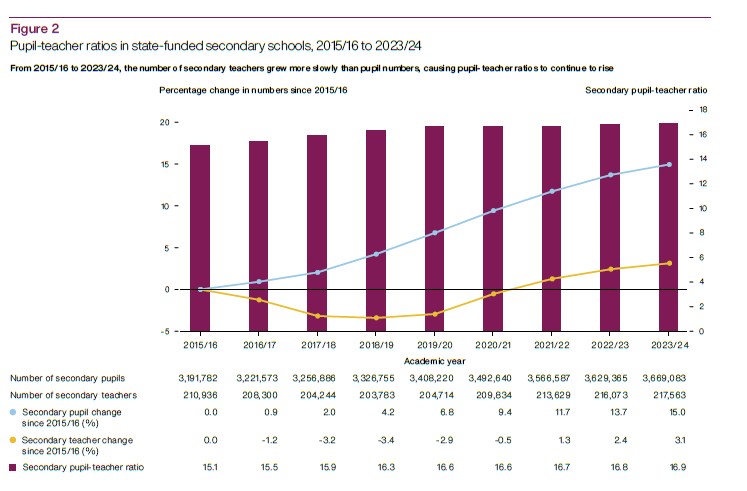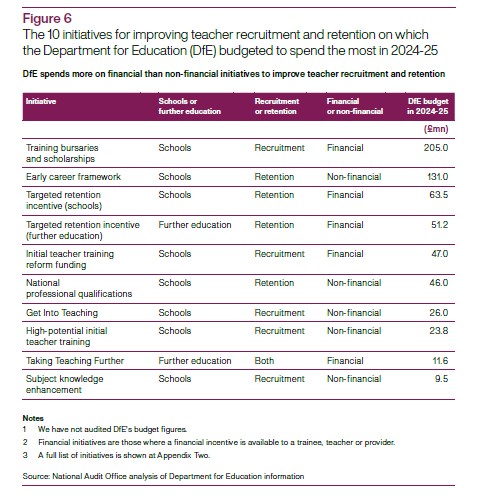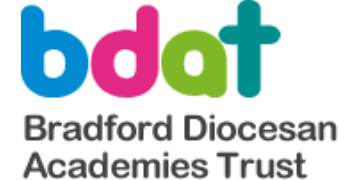Government officials have admitted delivering Labour’s flagship election manifesto pledge to recruit 6,500 new teachers is a “significant challenge”, a new report has revealed.
A National Audit Office report into teacher supply, published today, has ordered government to publish a full delivery plan for the pledge after the multi-year spending review later this year.
The report found there are now 4,000 teaching vacancies across secondary schools and colleges as teacher recruitment has not increased in line with pupil numbers.
‘We may not be able to use best-evidenced initiatives’
Labour first pledged 6,500 new teachers in 2021, while in opposition.
But ten months on from forming government, there has been few details on the promise – apart from the fact it will be delivered over the full course of parliament, which ends in 2029, and will be split across secondary and college sectors.
The NAO report reveals a draft plan was drawn up in November, but the Department for Education in February “rated its confidence in achieving the pledge as a ‘significant challenge’”.
The “fiscal context” means government “may not be able to use the best-evidenced (and most costly) initiatives”, the NAO report said.
The department will develop a business case for the pledge in August.
The NAO said this leaves only “three more cohorts of new entrants to influence to meet the pledge, which allows limited time to trial new initiatives”.
‘Green shoots’ of improvement
However the report comes after new figures suggest recruitment is considerably up this year.
Government said 2,000 more people are training to become secondary teachers compared to last year. More than 2,500 teachers are also expected to stay in the classroom over the next three years than previous estimates.

Education secretary Bridget Phillipson (pictured) said these are “green shoots” of their plan for change.
“Following last year’s 5.5% pay award, and with hundreds of millions of pounds being invested to help us turn the tide, I’m determined to restore teaching as the attractive, prestigious profession it should be.”
In relation to delivering the recruitment pledge, the DfE told the watchdog it aims to “consider demographic pressures to best target initiatives where they are needed most, in the context of a constrained fiscal environment”.
This will “primarily” be considering whether to expand existing initiatives, such as financial incentives, but also “exploring other ways to improve retention”.
‘Provide more transparency’
But the NAO has told government to “provide greater transparency” on what the pledge “means in practice” for schools and colleges after the multi-year spending review settlement, due in late Spring.
Between 2015-26 and 2023-24, secondary teacher numbers increased by 3 per cent to 217,500, while pupil numbers rose 15 per cent to 3.7 million.

As a result, the average number of pupils per teacher increased from 15.1 to 16.9.
There were around 1,500 teacher vacancies and 1,700 temporarily filled posts in secondary schools in 2022-23.
Government estimates that 1,600 more secondary teachers will be needed between 2023 and 2027 to meet growing pupil numbers.
But there are 2,500 teacher vacancies in colleges, and this could rise to 12,400 by 2028.
NAO said government should publish a “delivery plan setting out objectives, responsibilities, milestones, and how increases will be measured, and subsequently, publicly report on progress” on the 6.5k pledge later this year.
It should also “fully assess, balance and manage the implications for value for money, affordability, responding to future teaching requirements and demographics, and the extent to which it can deliver its longer-term aims” on teacher recruitment and retention.
Better evidence needed on workload and wellbeing
In 2024-25, DfE budgeted to spend around £700 million on financial and non-financial recruitment and retention initiatives, not including pay rises.
Of this, £390 million relates to financial incentives such as training bursaries and retention payments, with “good evidence” these work.
However, evidence is “limited” on the effectiveness of initiatives to “improve workload or wellbeing, despite these being common reasons for teachers leaving”, the NAO found.
The spending watchdog urged ministers to extend its evidence base for what works on recruitment and retention, and to analyse the cost and benefits of initiatives to help decide where to prioritise resource.

NAO also wants work to be done on exploring how to encourage more trainee teachers to work in state schools.
The DfE estimated just 76 per cent of those finishing training in the 2022-23 academic year went on to teach in state schools within 16 months.
Meanwhile, secondary recruitment targets have been missed for all but one of the past ten years, and the number of qualified teachers leaving schools has risen to above pre-pandemic levels.
This impacts disadvantaged schools the worst, where just over a third of teachers have five years’ experience or less, compared to 20 per cent in the wealthiest schools.
DfE has said it is looking into initiatives aimed at encouraging new teachers to stay teaching in state schools.
DfE explores school recruitment quarterly updates
But Gareth Davies, head of the NAO, said: “Despite the government’s pledge, secondary schools and further education colleges face a challenge in securing enough teachers to support growing student numbers.
“DfE must continue efforts to look at this as a cross-system issue and improve further education workforce data, to allocate funding effectively and ensure all children and young people achieve the best outcomes.”
The watchdog found the DfE has a good understanding of secondary school teacher numbers, but that its modelling of future requirements fails to build in known shortages – for example in specific subjects – or indicate the total number of teachers needed.
However, government has a “less mature and comprehensive data” for colleges and should develop cross-sector data and insights from both sectors to inform decision-making.
DfE is now “exploring ways” to monitor recruitment progress “more frequently”.
“For schools, this could include quarterly updates using data such as initial teacher training applicants and numbers, to overcome the time lag in actual data being available.”








Your thoughts